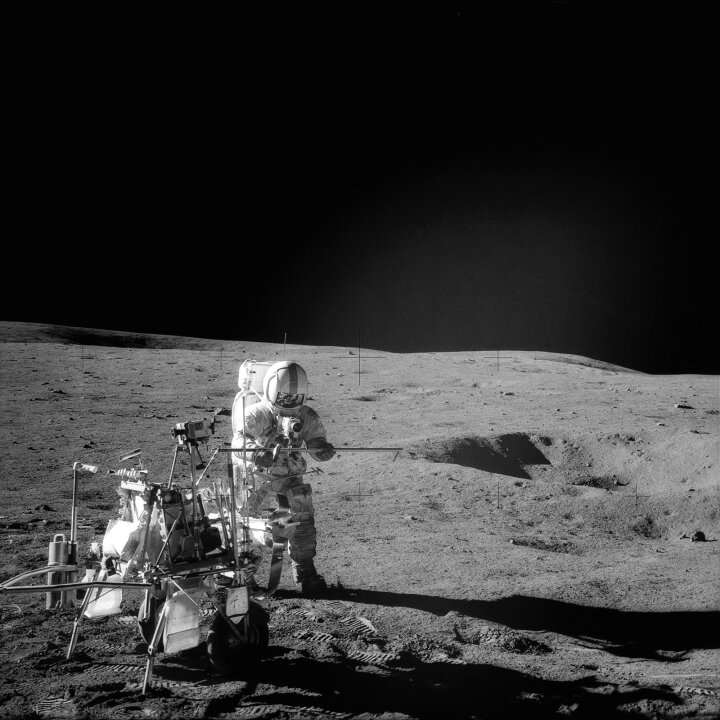This page is a permanent link to the reply below and its nested replies. See all post replies »
PhoenixPhail · M
I don't see how that picture could have been taken on the moon. There's no atmosphere there to diffuse light, so anything that's not exposed to direct light should appear totally black. That's not the case here.
ChipmunkErnie · 70-79, M
@PhoenixPhail Reflected light?
PhoenixPhail · M
@ChipmunkErnie No, there's no atmosphere to carry the light. Everything that's not directly illuminated, should be seen as total darkness.
ChipmunkErnie · 70-79, M
@PhoenixPhail Never heard anyone referring to atmosphere "carrying light" -- light passes through vacuum and non-vacuum, both. An atmosphere diffuses light, yes, but light would reflect off surfaces, etc., atmosphere or not. You might get that perfect black/white division out in open space where there was no planet/moon surface to reflect light, but on the moon at the very least the light would reflect from the lunar surface.
DrWatson · 70-79, M
@PhoenixPhail So how do we see a bright shining moon from the Earth? The sun strikes the moon, which has no atmosphere, and yet the light gets reflected off the surface of the moon and travels through the vacuum of space to the upper reaches of our atmosphere, and then to the ground.
PhoenixPhail · M
@DrWatson We see the surface of the Moon via the Sun shining directly on it and being reflected back to Earth. But anything in shadow is shown as completely black. That shadow may appear lighter on Earth because the light is passing through the Earth's atmosphere, which blends it. But on the Moon, shadow would be completely black.
By the way, the vacuum of space is only relative to the atmospheric pressure on Earth, which is approximately 14.7 pounds per square inch at sea level. You have that pressure on the inside of every cell in your body as well as on the outside. It's equalized. So, space isn't really a vacuum. We're pressurized.
By the way, the vacuum of space is only relative to the atmospheric pressure on Earth, which is approximately 14.7 pounds per square inch at sea level. You have that pressure on the inside of every cell in your body as well as on the outside. It's equalized. So, space isn't really a vacuum. We're pressurized.
ChipmunkErnie · 70-79, M
@PhoenixPhail Yes, and space isn't zero-gravity, it's micro-gravity, etc., etc. etc, all of which ignored that light reflects off solids, liquids, gases, plasma, and so when it hits the surface of the moon it would reflect in all directions, depending on the angle at which it hits the surface particles. Or are you really trying to claim the photo is a fake and that isn't what the moon actually looks like?
DrWatson · 70-79, M
@PhoenixPhail Oh, I see. Sorry, I misunderstood what you were saying.
yes, shadows are completely black on the moon. On the other hand, there is uneven elevation, so at low sun angles, there are patches of light within the shadows, as higher pieces of ground catch the sun. And those pieces of ground can be very tiny patches.
i look at the moon through a telescope quite often and see this. (Although not at the resolution of this photo, of course.)
In the picture, that shadow in the foreground looks as black as the sky does .
yes, shadows are completely black on the moon. On the other hand, there is uneven elevation, so at low sun angles, there are patches of light within the shadows, as higher pieces of ground catch the sun. And those pieces of ground can be very tiny patches.
i look at the moon through a telescope quite often and see this. (Although not at the resolution of this photo, of course.)
In the picture, that shadow in the foreground looks as black as the sky does .







